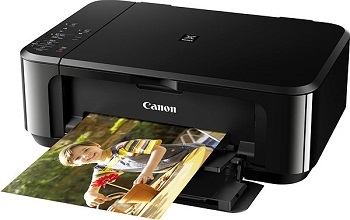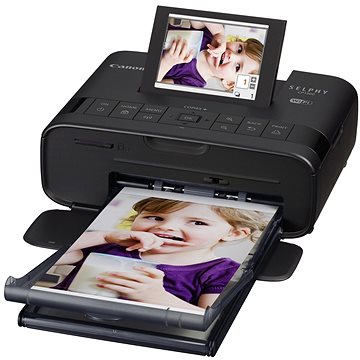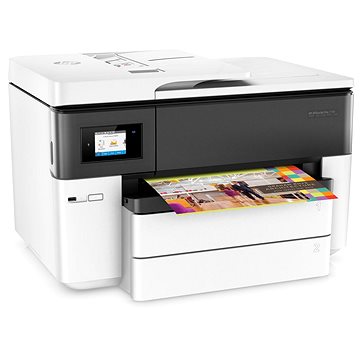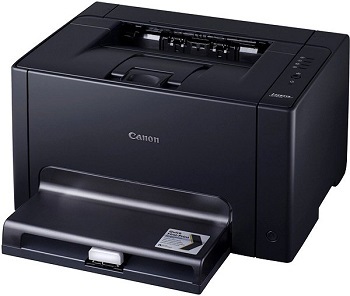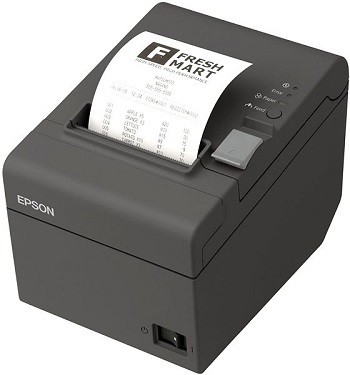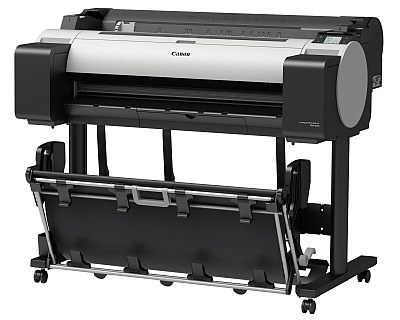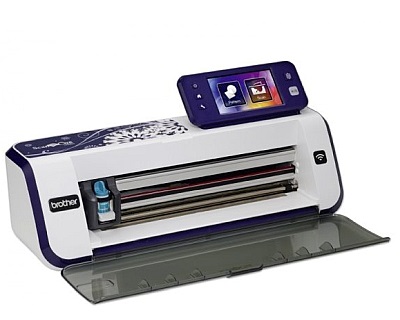How to Choose a Printer
This guide will help you choose the printer that's right for your needs. Printers are divided into inkjet, laser, and dot matrix depending on the printing technology used. The wide range of options is further enhanced by the ability to choose from multifunction printers that also feature scanner and copier functionality. Read on to learn about printer parameters and what they mean so that you can confidently choose the printer that's right for you.

What do you need to know?
- How do I choose the right printer?
- Choosing a Multifunction Printer
- Choosing an Inkjet Printer
- Choosing a Laser printer
- Choosing a 3D Printer
- Choosing a Dot Matrix Printer
- What is a plotter?
How do I choose the right printer?
If you want to choose a printer that you will be 100% happy with, you need to have a clear idea of why you are buying it and what you expect it to do. Home printers, for example, have different requirements than those for business or school use.
First, ask yourself the following three questions:
- How often and how much do I print?
- Am I going to print in colour or black and white?
- Do I also need to copy and scan as well as print?
I print occasionally, both in black and white and in colour, and I sometimes need to copy something.
If this description fits you, it is a good idea to choose a home inkjet printer. Their low purchase price and compact dimensions easily offset the cost of ink cartridges. Better yet, they are mostly made in a multifunctional design, so they can also scan and copy documents.
I print often, mainly in black and white.
In this case, a laser or LED printer is a good choice for you. They are notable for their fast and inexpensive printing, especially when it comes to black and white documents. Due to their higher purchase price and very low printing costs, they are suitable for use as business printers. Similarly to inkjet printers, laser printers are also available in a multifunctional design.
I want to print my holiday photos.
For printing photos, your best options are thermal printers or high-quality inkjet printers. The difference lies in the printing technology, where the thermal printer uses dry printing and the colour intensity is determined by the temperature. Unlike inkjet printers, they are not suitable for printing common text documents.
Important Parameters when Selecting a Printer
Maximum Print Resolution
The maximum print resolution, usually listed in DPI, indicates the number of pixels that the printer can print in a given area. More precisely, it means the number of dots that the printer can print per inch. The general rule is that the higher the DPI, the finer and the more detailed the printed image.
Print Resolution for Inkjet Printers
With inkjet printers, especially if you want to print photos, we recommend choosing a printer with a high print resolution. Basic inkjet models print at 4800x600 DPI, the current printing standard is 4800×1200 DPI, and some more high-end devices offer a resolution of 5760x1440 DPI or more.
Print Resolution of Laser Printers
Laser printers are designed primarily for printing text documents, so they can get away with having a comparatively low resolution. Basic laser printer models print at 600x600 DPI. However, even among cheaper models, you can find printers with a resolution up to 4800x600. That said, the print resolution is not a key parameter when choosing a laser printer. Laser printers are not designed for printing images and photos, so the resolution is not nearly as important in this case.
Print Resolution for 3D Printers
For 3D printers, the resolution is listed as horizontal and vertical, in tenths of a millimetre. Horizontal resolution refers to the X and Y axes, and vertical to the Z axis. The value indicates the minimum possible thickness of one layer. At present, the recommended horizontal resolution is below 0.1mm and vertical up to 0.2mm. The thinner the layers, the more detailed objects you can print, with a caveat that the printing will also take longer. When printing sophisticated objects, you also have to consider various supporting constructions, which means extra work for the printer. Printing a large object in high quality may take a whole day.
Printer Consumables
The difference between various types of paper may seem trivial, but it's not. Since there are dozens of paper types on the market today, it is important to know at least the basic parameters, such as size and weight.
Paper Size
Most inkjet and laser printers work with A4 and smaller sheets, but there are also those that can handle A3 and larger sizes. Consider, however, how many A3 pages you really print and whether paying extra for this feature is actually worth it.
Paper Weight
The higher the weight, the better and more expensive the paper. Weight is listed in grams per square metre and the standard is 80g/m2. Quality paper has a weight around 250-300g/m2. Paper with very low grammage is also available, but we don’t recommend using it for duplex printing because the ink may smudge and bleed through.
Print Speed (Pages Per Minute)
The print speed indicates the number of pages that the printer can print per minute. When it comes to speed, laser printers are generally significantly faster and more efficient.
Print Speed of Inkjet Printers
For inkjet printers, the standard print speed is about 20 pages per minute. For the most basic models, the speed drops to 5 printed pages per minute, but there are also devices that can print up to 70 pages per minute.
Print Speed of Laser Printers
For laser printers, the standard print speed is about 20 to 30 pages per minute, but there are also devices that can print up to 60 pages per minute.
Special Printer Features
WiFi connection (mobile app, AirPrint)
Many printers now offer the ability to connect to a computer or phone via Wi-Fi or Bluetooth. Connection cables are no longer necessary, which speeds up the printing process and makes printing much easier overall.
How to print wirelessly? The answer is: with mobile applications available for both Android and iOS systems. These apps are published by the printer manufacturers, and they usually allow you not only to use the printer, but also to set it up. Users of Apple devices have an advantage - if the printer is compatible with AirPrint (many printers are), they don’t need to install an extra app.
Refill Tank System
This feature allows you to refill the ink straight into the printer tank. This is a greener option than constantly buying new cartridges.
Borderless Printing
Some printers can print over the entire surface of a sheet of paper, without any margins.
Duplex Printing
If you are interested in duplex printing, look for a printer that explicitly lists this feature. There is a manual duplex printing and an automatic duplex printing. Automatic printing means that the printer rotates the paper itself during the process of printing. In manual printing, the machine prints even pages first, asks you to reload the paper turned upside down in the tray and then prints odd pages.
Copying and Scanning
There are printers that, in addition to regular printing, can also copy and scan documents. We call them multifunction printers. This is the best printer option for a regular user.
Fax
Some printers can also fax documents.
Memory Card Reader and USB
While the USB format has become indispensable over the past decade, memory cards have also gained considerable popularity. Many modern printers allow you to print documents straight from a memory card.
Automatic Document Feeder
Also known as ADF, this is a device that makes printing faster and easier. While you normally have to put sheets into the printer yourself, the automatic document feeder can do it for you. Perhaps the most useful feature is its ability to automatically turn the sheets for duplex printing. Standard document feeders can handle up to 200 pages per minute.
Frequently Asked Questions when Choosing a Printer
How long does one cartridge last in the printer?
What is the yield of laser printer toner on average?
Laser and LED printers can print over 2000 pages with a single standard toner cartridge. This is one of the best options available if you want to save on the operating costs of printing.
What is the yield of a single ink cartridge?
With basic inkjet printer models, expect to print a few hundred pages per cartridge. Of course, the overall yield also depends on the volume of the cartridge. One millilitre of ink can print about twenty pages, so you can use this simple formula to get some idea of how many pages you can print: cartridge volume in ml × 20 = number of printed pages per cartridge. It is also worth noting that inkjet printers consume a certain amount of ink for automatically cleaning the print head, which takes place every time you turn on the device. Each cleaning procedure consumes approximately the same amount of ink as printing 5 standard pages.
How much should I invest in a printer?
Inkjet Printer Prices
Basic inkjet printer models are very cheap and affordable for everyone.
However, if you print fairly often, it pays to invest in a more advanced device that offers higher resolution, faster printing, easier operation, and many extra features such as Wi-Fi connectivity, automatic document feeder, duplex printing, etc. Multifunction printers for normal home use don’t cost much and these devices are also suitable for less demanding professionals.
In the higher price category, you can find well-equipped printers for demanding users. Truly high-end devices cost a hefty sum, but their features are excellent.
Laser Printer Prices
Prices of the basic models of laser printers start at 1 500 CZK, the cheapest LED printers start at 2 500 CZK.
If you print often, however, it pays to invest in a more advanced device. With a laser printer, you have to be ready to pay extra if you want to print in colour. The prices of a colour laser printer start at 6 000 CZK. Well-equipped laser printers that are suitable for smaller offices start at 4 000 CZK, professional printers designed for large offices can climb up to tens of thousands.
3D Printer Prices
3D printers are getting cheaper as the technology evolves, so now you can find a 3D printer under 20 000 CZK without much trouble. These models are mainly suitable for creating small 3D models and prototypes. There are also 3D printers on the market costing milions of crowns, and these can create some truly incredible things.
Multifunction printers also provide a scanner and copier function. They are becoming increasingly popular in both homes and offices. Multifunction printers can be either inkjet, laser, or LED. Before buying one, consider how often you are planning to use it and what you normally print. Inkjet printers are better suited for printing photos and graphics, while laser and LED printers excel at printing text documents. To get a better idea which printer to choose, ask yourself a few questions listed below.
Do I need a multifunction printer?
You have to ask yourself if you really need all the functions that this type of printer offers. How many copies, faxes, scans, and prints do you actually make every day? Multifunction printers have become very popular especially in home and medium-sized business environments because they can save you plenty of space and time.
What should I look for when choosing a multifunction printer?
The most common issue is the scanner resolution because the cheaper devices generally offer scanning that is of low quality. You should also take note of what printing technology the printer uses. A laser printer and an inkjet printer inevitably have different parameters.
Should I buy a scanner separately?
In general, scanners in multifunction printers are not as good as dedicated scanners. However, they are generally sufficient for home and office use, where you usually just scan photos or text. Multifunction printers also offer the advantage of saving the space required for multiple devices. For professional photo scanning and printing, we recommend using a dedicated scanner and a high-quality inkjet printer.
Inkjet printers deliver excellent print quality. They are suitable for printing photos and are equally useful for both casual users and professionals. Their biggest advantage lies in their very low purchase price - which, if you don’t print too often – easily offsets the higher cost of ink cartridges. The principle of an inkjet printer is not just one, there actually three of them: thermal printing, piezoelectric printing and wax printing. All three types can produce results of high quality.
Photo Printers
Photo Printing
Advantages and Disadvantages
- Wide range of settings - e.g. glossy and matte
- Many print formats
- Memory card reader and USB support for fast printing straight from your PC and camera
- Not suitable for printing text
- High printing costs
Large Format Printers
Large Format and A3 Printers
Advantages and Disadvantages
- Large format printing, A3 printing and more
- Support for automatic duplex printing
- Borderless printing
- High purchase price
- Large physical dimensions
Do I need an inkjet printer?
The inkjet multifunction printer is generally the most common printer type found in European households, but our product selection also includes models designed for professional high-quality photo printing. If you don’t print all that often and require colour printing from time to time, an inkjet printer is a great choice for you.
What should I look for when choosing an inkjet printer?
Every inkjet printer requires ink cartridges. This can get really expensive if you print a lot, so pay close attention to the ink consumption listed in the printer's specifications. When purchasing a new ink cartridge, be sure to check that your printer and the new cartridge are compatible.
Save money with an ink tank system
If you want to maintain print quality and save on ink, you can buy a printer with the a tank system. These printers allow you buy ink in sealable bottles instead of whole cartridges, so you can refill your printer in seconds whenever you need. Check out the Ink Tank Inkjet Printers category to learn more.
Laser and LED printers provide a fast and inexpensive way to print many black and white documents. They are best suited for users who print text documents on a regular basis, for example, schools and businesses. Some models also offer a colour printing option. How does a laser printer work? The principle of a laser printer is based on toner (powder), which is attracted to the areas on the page irradiated by the laser beam, and then a fuser unit bonds the toner to the paper.
Do I need a laser printer?
The most common users of laser and LED printers are university students, office workers, and other people who, for one reason or another, have to print large amounts of text. A single toner cartridge will generally yield about 2000 pages of text.
What should I look for when choosing a laser printer?
If you are buying a laser printer for your business, make sure that it has an Automatic Document Feeder. This can save you and your employees a lot of time, because it makes printing considerably faster and is absolutely invaluable for duplex printing. Also take note of the print resolution, as it can be rather low in cheaper models. This could pose problems if you ever need to print documents with a small font.
What is the difference between laser and LED printers?
Laser and LED printers operate on basically the same principle, with the only major difference being the source of electromagnetic radiation. Laser printers use a perfectly focused laser beam, which gradually irradiates dots on the so-called drum. The beam is guided by a system of mirrors. LED printers have a laser head with one or more diodes, which pulse-flash across the entire page width. This makes them much more compact and also reduces the number of mechanical components they need to have, reducing the overall risk of failure. Another advantage of LED printers is their ability to adjust the intensity of emitted light, which means that they can produce different colour tones and finer colour transitions when printing.
The tank system can save you a lot of money
Laser printers with a tank system are a great option if you want to save money and maintain excellent print quality. Here, you don't need toner cartridges—you can simply refill the printer yourself whenever you want, using a special supply device. You can read more about this innovative approach in our HP Neverstop: The First Cartridge-Free Laser Printer article.
3D printers have undergone a tremendous amount of development during their short existence, and today there are many options available. Before buying one, you need to spend some time studying 3D printing, in general, to make the selection process easier.
Do I need a 3D printer?
The time when 3D printers were exclusively the domain of hardcore enthusiasts is past. At present, 3D printers are often used by prototype designers, architects, and other designers from various fields. Many schools and organisations also use 3D printers for study purposes.
What is a 3D printer used for?
3D printers are used to reproduce 3D graphic designs. 3D printing allows you to create complex functional shapes with less material than is required by traditional production methods. The basic principle is very simple. You create a spatial model on your computer and send it to the printer. The 3D printer then prints out the model by gradually applying horizontal layers of molten plastic.
Important Parameters when Choosing a 3D Printer
Build Area
The build area is most often listed in millimetres and in three axes. The last one indicates the height. All the dimensions are often similar or even exactly the same. A 3D printer for home use should have a build area of at least 100 × 100 × 100.
Materials
The printing materials most commonly used in 3D printing are ABS or PLA, available in 1.75mm or 3mm thick filaments. ABS is more suitable for smaller projects because the thermal expansion of this material causes the individual layers to twist and warp due to the difference in temperature, so if the printed object is large, the resulting deformation can be big enough to prevent any further printing. PLA, on the other hand, is a nicely malleable and biodegradable material, which, however, retains its mechanical properties only to a temperature of about 60°C.
Speed
The print speed depends on the printer's parameters, but also on the complexity of the printed object and the type of material used. Speed is listed in millimetres per second. Ideally, the printer should have a print speed of at least 40mm/sec, but if you can get a faster printer, that's a nice bonus.
Bed
The printing bed should be positioned horizontally to ensure an even nozzle height at every printing point. The bed also serves to attach the model, which is why printing beds often have a rough surface, to which the first layers can easily stick. Another option is that the printer will create a wide base for the printed model, which will get separated from the model during the last printing phase. The deformation of the edges cause by rapid cooling can be avoided either by a pedestal that would serve as a support, or by using a heated printing bed to prevent rapid cooling of the model.
Dot matrix printers excel at printing long text documents at a very low cost. They are especially suitable for printing long lists, forms, and accounting documents. When printing, they use a pin system where the pins strike an ink-soaked ribbon against the paper. For this reason, these printers are unsuitable for printing anything other than text.
Do I need a dot matrix printer?
If you work in accounting or simply need to print long documents on a regular basis and want to print them quickly and with several copies at a time, then a dot matrix printer is exactly what you need.
What should I look for when choosing a dot matrix printer?
The number of pins is the most important parameter when choosing a dot matrix printer. Printers are divided into two categories according to their number of pins.
9 Pins
These printers are suitable for printing basic documents without complicated graphics.
2x9 Pins and More
The number of pins directly affects print quality and print speed. Printers with a larger pin-count are faster, offer better printing quality, and are usually quieter. They are also able to print multiple copies at a time.
Also take note of the print speed, which indicates the number of characters that the printer can print per second.
POS Printers
What are the types of receipt printers?
Receipt printers can be thermal or dot matrix. The advantage of dot matrix printers is a lower price, minimal operating costs and the ability to print on multiple sheets at the same time. Thermal printers excel at higher speeds and quiet printing, but their printing has limited durability.
How do I connect the printer to a cash register?
The most common interface types for connecting a receipt printer are USB or LAN, but higher models also offer Wi-Fi for easy and convenient cable-free connectivity.
What are the paper formats?
Paper rolls with a width of 55 to 80mm are used in cash registers. Some models allow you to choose the roll width according to your current needs.
Plotter printers are special inkjet printers adapted for printing large formats - up to A0. The paper unwinds from the roll 24" or 36" wide or is taken out of the feeder. A0 (36") plotters can also print A1 pages by cutting the A0 paper in half. Plotters are usually very large machines and their price is not the lowest. Therefore, it is not a device suitable for ordinary households. At home, multifunction printer will serve better. Plotter is suitable for architecture studios, companies doing engineering drawings, schools and various professionals.
A cutting plotter is a device that does not print on paper, but cuts the paper in desired shapes. This can be useful for anyone who wants to print their own designs on T-shirts, paint a room using unique patterns or just get regularly creative in any way. The cutting plotter can quickly produce a large number of templates, even with fine details.
Glossary - Printers
Printhead
The printhead is a major component of an inkjet printer that contains the printing elements, enabling the printer to put ink on paper. The cartridge may or may not be part of the printhead. The printhead generally prints using the three most common colours.
Cartridge
It is a label for a replaceable ink cartridge in inkjet printers.
Toner
It is a black or coloured powder (CMYK: Cyan, Magenta, Yellow - Yellow and Black) used in laser printers and copiers. Different polymers are used in the production of toner.

